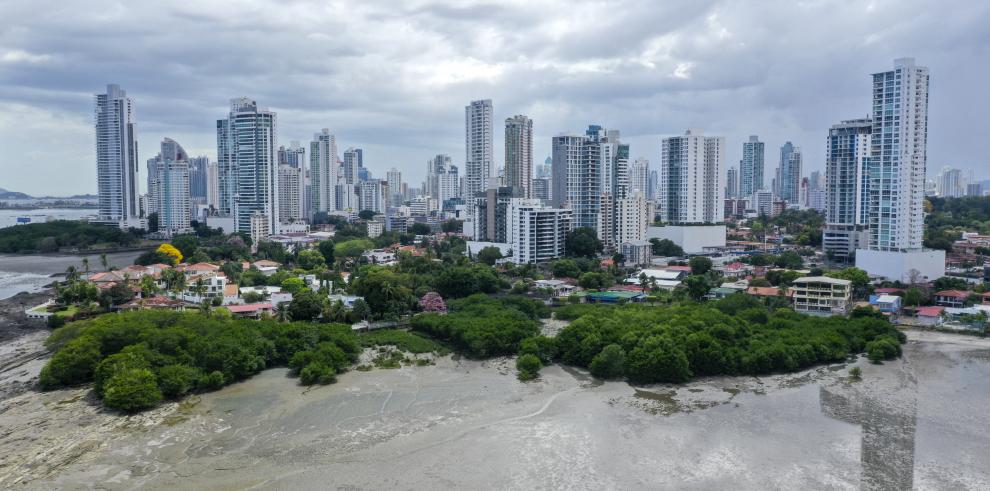Mangroves are absolutely necessary for the entire eco system. They must be protected. God bless J.B.
Ángela

With a vegetation that is almost impenetrable to the sun’s rays and food in abundance, thousands of birds have a vital resting point on their migratory route in the mangroves of Panama. But pollution and urban growth threaten their “resort”.
In the Juan Díaz mangrove, a few kilometers from the center of Panama City, on the Pacific coast, the heat and humidity are perceived. The dry leaves, fallen from the trees, paint the ground ocher.
Located in the Bay of Panama, which is part of the Ramsar Convention on Wetland Protection, this habitat is considered one of the most important bird migration sites in the Western Hemisphere.
It is estimated that up to two million copies of shorebirds pass through this area annually. In addition, according to Ramsar, the site serves as habitat for up to 20% of the world population of the semipalmated plover and 14% of the western sandpiper. There are also parrots, iguanas, crabs, shrimp and shells.
“The mangroves of Panama, in particular those of the Bay of Panama, are of great importance for migratory birds in general,” Rosabel Miró, executive director of the ecological Audubon Society of Panama, told AFP.
“They make a stop here, a strategic stop, which is basically to feed and gain that energy they need to continue the trip (…) It’s a resort,” he adds.
However, the birds live in the mangrove along with empty cans, plastic bottles, tire debris and shoe soles, which have reached the forest washed away by the tide.
“One of the most visible threats is contamination by plastics, there are others that are not as visible as the contamination of water sources by any type of water that we throw into our houses that comes with oils, chemicals from detergents,” which arrive to the sea and affects them, says Miró.
“Another threat is closely related to our lifestyle, we want to live near the coast, but at the cost of destroying the mangroves, we destroy them, fill them in, build our homes or businesses and all this to the detriment of these forests that somehow they serve as protection,” he adds.
– “Everything reaches the sea” –
According to the Ministry of the Environment of Panama, the country, with coasts on the Pacific and the Atlantic, has the largest variety of mangroves on the continent, with 12 of the 75 pure species of this shrub that exist in the world.
More than a hundred species of birds pass through the Juan Díaz every year. Some come from the Arctic, Alaska, Canada, the Amazon forests or the coasts of Chile and Argentina. They seek food and shelter as they migrate from North America to South America in October and November, and vice versa in the northern summer.
Data from the Ministry of the Environment indicate that Panama has more than 165,000 hectares of mangroves, less than half that of 50 years ago. However, in some places its coverage has increased due to different natural processes.
The main threats are livestock and agricultural activity and the construction of pharaonic infrastructure works for commercial and real estate use.
“Everything that carries the rivers also reaches the sea and everything that reaches the sea by the tides reaches the mangrove,” warns Natalia Tejedor, a researcher at the Technological University of Panama.
– Carbon sink –
Mangroves protect the coasts from the ravages of the weather and feed many commercially important marine species. They are also great carbon sinks, which mitigates the emission of greenhouse gases.
In Juan Díaz, a 30-meter tower measures solar radiation, carbon sequestration and humidity. According to Tejedor, these measurements will allow us to know more precisely the contribution of these mangroves to the environment.
“How can we tell decision makers to protect mangroves? Because of the benefits they provide us. Among them, carbon sequestration. And now, with the Paris agreements [to combat climate change], it is an issue very important in which all the countries are involved,” assures Tejedor.
Officials say Panama is one of the few carbon-negative countries, meaning it absorbs more greenhouse gases than it produces.
The mangroves “are the first barrier that we find between the mainland and the sea, they are fundamental, it is simply the first forest that protects us,” says Juliana Chavarría, a technician in the Blue Carbon mangrove study project.
In the Juan Díaz mangrove you can hear the singing of the birds. In the distance you can see the skyscrapers of Panama City. Specialists are committed to a healthy coexistence between the environment and development.
“Panama means abundance of fish. Abundance of fish equals abundance of mangroves. To the extent that we protect this type of ecosystem, we are going to secure our food and our marine-coastal resources,” warns Chavarría.